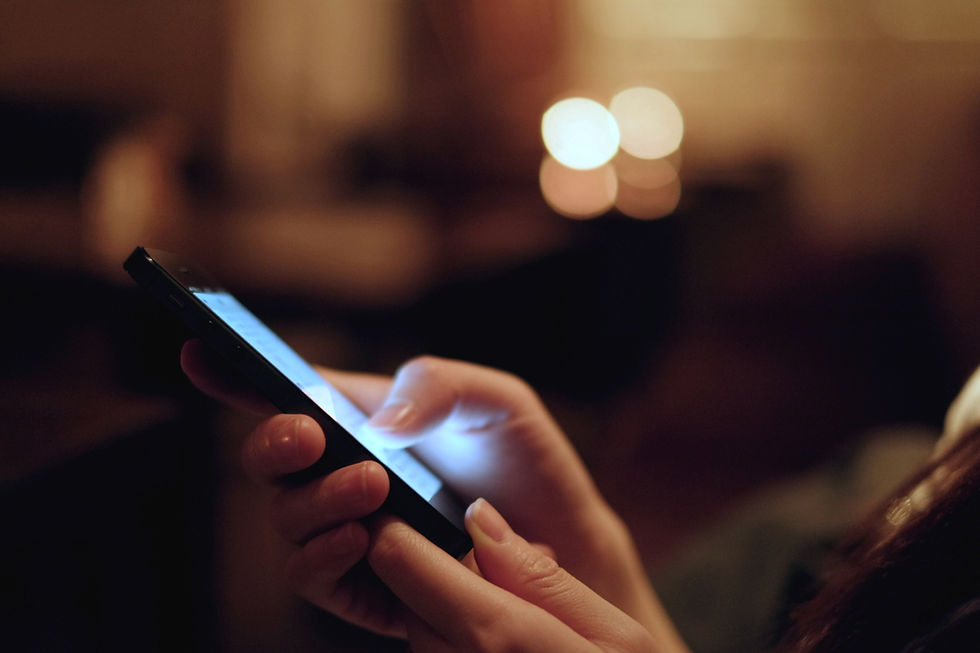The Problem
- Forrest & Will
- Dec 1, 2017
- 4 min read

Cellphones have changed something vital in the way we interact, affecting not just the way we communicate but also the integrity of relationships themselves. How can a true connection be made if the only interactions take place on the screen of a phone? We believe it is important to promote awareness concerning the importance of this topic, as well as forge into our day-to-day lives and uncover the significance smartphones hold in our lives. “In their study of college students, Harrison, Bealing, and Salley found that most felt it was unacceptable to text others while talking and hanging out with friends but they did so anyway” (Miller-Ott, et al). Humans are social creatures; we thrive on friendships and time spent with others. Cellphones have intruded on our lives and fundamentally affected the way we communicate. Smartphones appear to bridge the gaps between us, reinforcing our relationships; however, too much of a good thing can become a bad thing. Overuse, combined with dependency, have corrupted the main purpose of cellphones and begun to build barriers between us—in short, accomplishing the exact opposite of their intended purpose. Cellphones are now creating barriers between partners, friends and couples, as well as parents and their children, instead of breaking them down. We’ve all experienced that moment when mid-conversation, someone receives a call or text, and decides to respond. That moment when you’re spending time out together, out on a date, or maybe hanging out at home with your friends, and a phone vibrates, or a ringtone goes off, and suddenly a conversation is cut off, an interaction promptly severed. We’ve all experienced situations where cellphones build walls instead of overcoming them. In fact, a study done to investigate how people responded to their partners receiving cellphone calls determined that people often exhibited some anxiety or annoyance at being cast aside. Those who were disregarded were commonly observed engaging in a number of activities to alleviate some of the vulnerability and unease, including reading a menu or a book, drinking their water or coffee, eating their food, looking out the window, studying the scrabble board, looking at other people and playing with their own cellphones (Humphreys, Lee). When someone introduces a cellphone to an exchange, the integrity of any social dynamics from that point onwards is greatly affected. So much of human communication relies on attention to body language and emotion. A document discussing the use of cellphones while in the presence of friends states “that the presence of a cell phone can impact both the quality of interactions and perceptions of one’s relational partner. If either conversational partner had his or her phone in sight, the quality of the conversation decreased and partners reported lower empathic concern” (Miller-Ott, et al). Cellphones create a divide that breaks down a fundamental part of human interaction, creating changes and consequences to our relationships that have not yet been fully uncovered. Furthermore, when asked about cellphone usage at the most recent social gathering attended, 86% of cellphone owners, ages 18 and older, said that they used their phone in at least one of the ways they were asked about. This included using their phone to read or send messages, take photos or videos, receive an incoming call, as well as a number of other types of usage (Lee Rainie, Kathryn Zickuhr). This is a staggering percentage of people, proving beyond a doubt the dangers of this technological society. Moreover, the article continued to state that “younger cellphone owners were far more likely to have used their phones in each of these ways at a recent social gathering than older cell users. Fully 98% of young adults used their phone for at least one of these reasons during a recent gathering, compared with 69% of cell owners 65 and older” (Lee Rainie, Kathryn Zickuhr). Additionally, in a study published by Mental Health Weekly, “fifty percent of teens report feeling addicted to their cellphones”. In a world blooming with technological advancements, cellphones are now appearing everywhere. This includes many social interactions that previously occurred solely in a face-to-face setting. In the world of today, cellphones have intruded much further than to merely interrupt our daily routines, and drastic changes are becoming increasingly apparent as technology shapes the way we communicate with the world. It is crucial that we remain aware of the dangers, and remember that though they have become almost fully integrated with our lives, cellphones may intrude into our lives only as far as we decide to let them. There is still hope, and with our project, we intend to make a change and restore social interaction to its true form.
Works Cited
Humphreys, Lee. “Cellphones in Public: Social Interactions in a Wireless Era.” New Media & Society, vol. 7, no. 6, Dec. 2005, pp. 810-833. EBSCOhost, doi:10.1177/1461444805058164.
“In Case You Haven't Heard.” Mental Health Weekly, vol. 27, no. 27, 10 July 2017, p. 8. EBSCOhost, doi:10.1002/mhw.31117.
Lee Rainie, Kathryn Zickuhr. "Chapter 4: Phone use in social gatherings." Pew Research Center, August 26 2015, http://www.pewinternet.org/2015/08/26/chapter-4-phone-use-in-social-gatherings/ 1615 L St. NW, Suite 800 Washington, DC 20036 USA. Accessed November 18 2017.
Miller-Ott, Aimee E. and Lynne Kelly. “A Politeness Theory Analysis of Cell-Phone Usage in the Presence of Friends.” Communication Studies, vol. 68, no. 2, Apr-Jun2017, pp. 190-207. EBSCOhost, doi:10.1080/10510974.2017.1299024.W







Comments